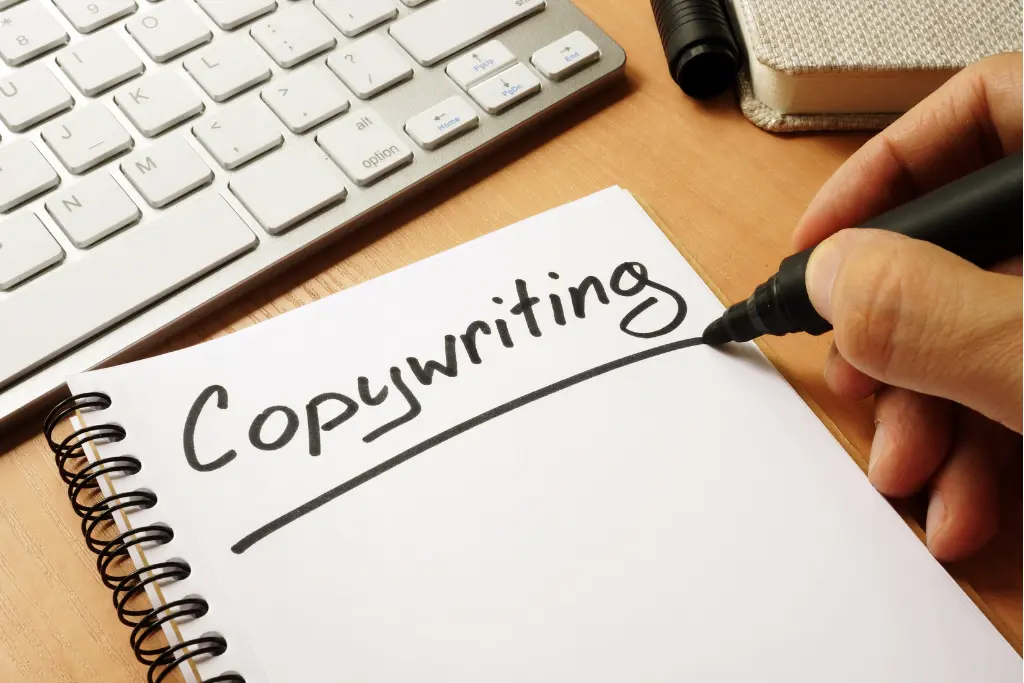How to Write the Copywriting for Mobile Apps?10 Tips for Engaging Users

In today’s digital age, where mobile apps dominate the market, crafting compelling copywriting for your mobile app is crucial for success. Whether you’re aiming to increase downloads, engage users, or drive conversions, the words you choose can make all the difference. In this guide, we’ll explore ten essential tips for writing copy for mobile apps, along with examples to illustrate each point.
1): Know Your Audience:
Understanding your target audience is fundamental to crafting effective copywriting. Consider factors such as age, gender, interests, and pain points. For instance:
- If your app is aimed at parents, your copy might highlight features that make their lives easier, such as organizing schedules or managing chores. Example: “Simplify family life with our intuitive scheduling app designed for busy parents like you.”
- For a gaming app targeting teenagers, your language might be more informal and use slang or pop culture references. Example: “Get ready to level up! Dive into epic quests and conquer new challenges with our addictive gaming app.
2): Highlight Unique Selling Points (USPs):
Identify what sets your app apart from competitors and emphasize those features in your copywriting. Showcase the benefits users will gain from these unique aspects. For example:
- If your productivity app offers a unique collaboration feature, your copy could highlight how it streamlines teamwork and boosts efficiency. Example: “Collaborate seamlessly with teammates in real-time. Say goodbye to endless email chains and missed deadlines!”
- A meditation app might emphasize its personalized approach to mindfulness, catering to individual preferences and goals. Example: “Find your inner peace with personalized meditation sessions tailored to your unique needs. Start your journey to a calmer mind today!”
3): Keep it Concise and Clear:
Mobile users have limited attention spans, so it’s crucial to keep your copy short, simple, and easy to understand. Avoid verbose language or complex sentences. For instance:
- Instead of: “Our innovative app provides users with an extensive range of features and functionalities that cater to a variety of needs and preferences.”
- Use: “Discover all-in-one convenience at your fingertips. Get everything you need in a single app.”
4): Create Compelling Calls-to-Action (CTAs):
Encourage users to take action with clear, persuasive CTAs. Use language that prompts immediate engagement and clearly communicates the next steps. Examples include:
- “Unlock exclusive content. Download now!”
- “Start your free trial today and experience the difference.”
- “Join our community of millions. Sign up now!”
5): Focus on Benefits, Not Just Features:
While it’s essential to highlight your app’s features, focus on how those features benefit the user. Explain how your app solves their problems or improves their lives. For instance:
- Instead of simply stating that your language-learning app offers lessons in multiple languages, emphasize the benefits of becoming fluent in a new language, such as career opportunities, travel experiences, and personal growth. Example: “Open the door to endless possibilities. Master a new language and connect with people around the world.”
- If your finance app offers budgeting tools, highlight the peace of mind and financial stability users can achieve by taking control of their finances. Example: “Take charge of your financial future. Budget like a pro and enjoy stress-free money management.”
6): Use Persuasive Language:
Persuade users to take action by appealing to their emotions, desires, or fears. Create a sense of urgency or excitement with persuasive language. Examples include:
- “Don’t miss out on this limited-time offer!”
- “Join the thousands of satisfied customers who have transformed their lives with our app!”
- “Unlock VIP access and enjoy exclusive benefits reserved just for you!”
7): Optimize for Keywords and SEO:
Incorporate relevant keywords into your app copy to improve discoverability in app store searches. Conduct keyword research to identify popular search terms related to your app’s category or niche. Examples include:
- For a recipe app: “Discover delicious recipes for every occasion. From quick weeknight dinners to decadent desserts, we’ve got you covered!”
- For a fitness app: “Achieve your fitness goals faster with personalized workout plans and expert guidance. Start your journey to a healthier you today!”
8): Maintain Consistent Brand Voice:
Your app’s copy should reflect your brand’s personality and values consistently across all touchpoints. Whether your brand voice is playful, professional, or authoritative, ensure coherence in your messaging. Examples include:
- If your brand is known for its friendly and approachable tone, maintain that warmth in your app copy. Example: “Welcome to our app family! Get ready to explore a world of possibilities.”
- If your brand exudes sophistication and elegance, reflect that refinement in your language. Example: “Experience luxury at your fingertips. Elevate your everyday with our exclusive collection of premium features.”
9): Test and Iterate:
Experiment with different variations of your copy to see what resonates best with your audience. Use A/B testing to compare performance and gather feedback from users. Continuously iterate and refine your copy based on insights and data. Examples include:
- Testing different CTAs to see which drives more conversions.
- Trying out variations of headlines or descriptions to gauge user engagement.
- Soliciting feedback through surveys or user interviews to understand preferences and pain points.
10): Prioritize Clarity Over Creativity:
While creativity can enhance your copy, clarity is paramount. Ensure that users can easily understand the purpose and functionality of your app without confusion. Examples include:
- Clearly outlining the steps users need to take to complete actions within the app.
- Using descriptive language and visuals to convey information effectively.
- Avoiding industry jargon or technical terms that might be unfamiliar to users.
Final Thoughts:
By incorporating these tips into your mobile app copywriting strategy, you can effectively engage users, drive conversions, and ultimately, enhance the overall user experience. Remember to continuously monitor performance metrics, gather user feedback, and refine your copywriting approach to ensure ongoing success in the competitive mobile app landscape.
Do you Want
More App Downloads?
Boost the Mobile App Growth with the Ultimate Mobile App Marketing Experts
Latest Blogs
Do you Want
More App Downloads?
Boost the Mobile App Growth with the Ultimate Mobile App Marketing Experts
Mobile app copywriting refers to the process of crafting compelling text content for mobile applications. It includes writing app store descriptions, in-app messages, notifications, CTAs, and other textual elements aimed at engaging users and driving desired actions.
Copywriting is crucial for mobile apps because it influences user engagement, conversions, and overall user experience. Well-crafted copy can attract users, communicate value propositions effectively, guide users through the app, and encourage desired actions such as downloads, sign-ups, or purchases.
Effective mobile app copywriting involves several key elements, including knowing your audience, highlighting unique selling points, keeping the copy concise and clear, creating compelling calls-to-action, focusing on benefits, using persuasive language, optimizing for keywords and SEO, maintaining a consistent brand voice, testing and iterating, and prioritizing clarity over creativity.
To identify your target audience, conduct market research to understand the demographics, preferences, behaviors, and pain points of potential users. Use analytics tools to gather insights about your existing users and their interactions with the app. This information will help you tailor your copy to resonate with your target audience effectively.
Effective mobile app copywriting examples include clear and concise app descriptions that highlight key features and benefits, persuasive CTAs that prompt users to take action, engaging push notifications that drive user engagement, and in-app messages that provide valuable information or incentives to users.
Improving mobile app copywriting skills involves continuous learning and practice. Stay updated on copywriting best practices, study successful app copy examples, experiment with different writing styles and techniques, gather feedback from users, and analyze performance metrics to refine your approach over time.
A/B testing allows you to compare different versions of your app copy to determine which one performs better in terms of user engagement, conversions, and other key metrics. By testing variations of headlines, CTAs, descriptions, and other copy elements, you can identify what resonates most with your audience and optimize your copywriting strategy accordingly.




